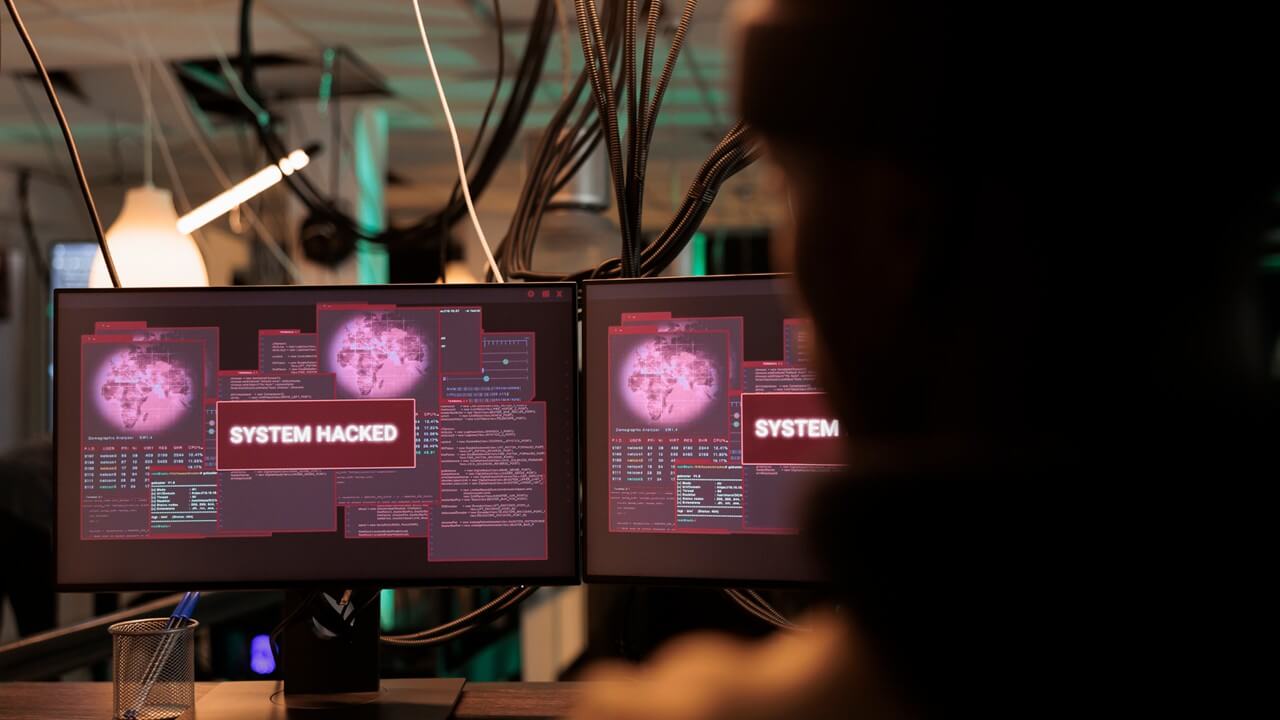Supply Chain Cybersecurity Management: The Emerging Vulnerability 2025

As digital supply chains grow in complexity, cybersecurity risks have evolved into a strategic challenge that directly impacts business operations and reputation. Effective cybersecurity management now requires end-to-end visibility, robust risk control, and data protection across every link of the partner ecosystem.
Digital Supply Chains and the Cybersecurity Vulnerabilities of 2025
The year 2025 marks an acceleration in enterprises’ digital transformation journey, as technologies such as 5G, cloud computing, and IoT become deeply embedded in operational infrastructures. More significantly, the widespread adoption of artificial intelligence (AI) has reshaped the game entirely, ushering organizations into an era of data-driven operations.
AI now enables more than just automation of complex processes. It empowers businesses with demand forecasting, inventory optimization, intelligent logistics planning, and real-time decision-making. With these capabilities, supply chains have evolved from reactive systems into agile, proactive networks capable of adapting to market fluctuations with unprecedented speed and precision.
However, alongside the benefits of digitalization and AI come hidden cybersecurity and data governance challenges that compel organizations to redefine how they secure and operate their digital ecosystems. When hundreds of systems, platforms, and devices are interconnected, a single weak link, whether from a software vendor, logistics partner, or IoT device, can become the entry point for a cascading cyberattack across the entire supply chain.
Regardless of size or industry, every enterprise is now a potential target. Cyber risks today arise from both technological vulnerabilities and human factors.
|
Technology |
Human Factor |
|
Unsecured AI training datasets, unpatched IoT devices, or poorly encrypted APIs between integrated platforms. |
A single phishing email impersonating a supplier, or one compromised employee device, can open the door to a full-scale attack. |
According to Ponemon Institute, 47% of organizations have experienced a cybersecurity breach involving a third-party partner, a number that underscores the growing concern around supply chain risk management. Three key trends are making these risks increasingly difficult to control:
- Complexity of the value chain: Each enterprise now collaborates with dozens or even hundreds of external partners. Interconnected systems such as ERP, CRM, MES, and WMS are linked through APIs, creating an open network filled with potential vulnerabilities.
- Supply chain attacks: Rather than breaching a company directly, threat actors increasingly target the weakest link. A single compromised software update can silently propagate across all customer systems.
- Lack of data transparency: Many organizations fail to assess or enforce cybersecurity measures among partners. Without structured auditing and information-sharing processes, governance gaps emerge.
The alarming reality is that cyberattacks are escalating faster than ever. Globally, recent reports highlight:
- By 2025, 45% of organizations will face cyberattacks targeting software supply chains (Gartner).
- 85% of cybersecurity leaders report recent attacks involving AI.
- Phishing incidents have surged by 1,265%, largely fueled by generative AI.
- AI-powered ransomware increased by 67% in 2024.
- Deepfake-related fraud tripled in 2024.
- 37% of new malware now leverages AI/ML techniques, complicating detection and mitigation.
- In Vietnam, losses from AI-driven scams and extortion have reached billions of VND.

The escalating threat landscape, particularly across digital supply chains, demands that enterprises elevate cybersecurity management to a strategic level.
Technology and AI advancements have become a double-edged sword: while optimizing operations, they simultaneously expand the attack surface across digital ecosystems. Cybersecurity management is no longer a concern limited to procurement or vendor relations, it has become a strategic mandate, requiring alignment between executive leadership and IT governance to ensure resilience across the entire supply chain.
Supply Chain Risks: Hidden Threats to Businesses
A small vulnerability at the beginning of the supply chain can cause severe consequences at the end. Below are some real-world impacts that organizations may face if supply chain cyber risks are not effectively managed:
1. Disruption of Production and Services
A ransomware attack targeting a machinery software supplier can paralyze the production line, not just for hours but for several days, disrupting delivery schedules and causing significant operational cost losses.
2. Leakage or Theft of Critical Data
When a partner within the supply chain is compromised, customer data, order information, or proprietary source codes can be accessed and copied without authorization. This not only exposes the business to fraud and loss of trade secrets but also erodes brand trust and long-term competitiveness.

If the system is compromised, customer information can be leaked, severely impacting data security.
3.Threat and Extortion Risks
Many recent cyberattacks use ransomware to encrypt data or seize access rights, threatening to expose sensitive information unless a ransom is paid. These incidents often result in severe financial losses for businesses.
4. Prolonged Recovery Time
After a cybersecurity incident, restoring systems and data can take weeks; or even months, without effective backup and recovery planning. During this period, organizations risk losing revenue, customers, and partner confidence.
5. Loss of Trust and Brand Reputation
In the era of social media, a security breach, even if not directly caused by the company, can still seriously damage its reputation if it involves its supply chain. Such incidents can make customers and markets question the organization’s cybersecurity governance capabilities.
6. Legal and Compliance Consequences
Regulations such as the GDPR and Decree 13/2023/NĐ-CP in Vietnam hold companies accountable even when data breaches occur through third-party partners. This can lead to financial penalties and erode trust among customers and international partners.
In this context, delegating cybersecurity responsibilities entirely to vendors is no longer viable. Enterprises must proactively establish a comprehensive cybersecurity governance framework, where supply chain risk management and data protection are shared responsibilities across the organization and its partner ecosystem.
Key Steps for Supply Chain Cybersecurity Management
To build a comprehensive and sustainable supply chain security strategy, organizations can follow the five recommended steps derived from real-world best practices:
Step 1: Classify and Assess Third-Party Risks
- Create a complete inventory of all partners, suppliers, integrators, and external platforms connected to internal systems.
- Identify the sensitivity level of data or access privileges each partner holds.
- Categorize partners by risk level to prioritize security controls.
Step 2: Define Minimum Security Requirements for Partners
- Incorporate recognized security standards (e.g., ISO 27001, NIST CSF) into vendor contracts.
- Require transparency in access management, patch management, and incident response policies.
Step 3: Conduct Periodic Assessments and Continuous Monitoring
- Perform regular security audits and penetration testing for partners.
- Implement real-time monitoring mechanisms for external network and API connections.
Step 4: Develop a Supply Chain Incident Response Plan
- Define response scenarios for potential breaches within the supply chain.
- Clearly assign roles among the organization, partners, and service providers in crisis handling.
Step 5: Strengthen Internal Training and Awareness
- Educate procurement teams, partners, and operations staff about supply chain cyber risks.
- Foster a company-wide culture that views secure supply chain governance as a shared responsibility.
SOC - The Defensive Shield for Supply Chain Cybersecurity
While these five steps provide a solid foundation for managing supply chain risks, not every organization has the technical resources or personnel to execute them comprehensively. Therefore, many enterprises partner with Security Operations Center as a Service (SOCaaS) providers as a strategic solution to bridge capability gaps and strengthen their defensive posture.

The role of strategic MSSP partners in helping organizations enhance their cybersecurity resilience.
SOCaaS delivers tangible value in preventing and managing supply chain risks, enabling organizations to maintain security and operational continuity.
- 24/7 Cybersecurity Monitoring: Continuous monitoring teams detect anomalies across internal systems and external data flows.
- Proactive Analysis and Early Warning: Using advanced AI/ML and SIEM platforms, SOCaaS identifies potential threats from unusual connections and issues early alerts before incidents occur.
- Third-Party Monitoring and Analysis: With 24/7 comprehensive visibility, enterprises benefit from multi-source log analysis, from applications, firewalls, servers, endpoints, and APIs, integrated with Threat Intelligence Platforms (TIPs) to detect abnormal behaviors or unauthorized access by partners. The system also evaluates configurations, vulnerabilities, and data integrity across external APIs and services, automatically generating alerts, responses, and compliance reports aligned with SIEM/SOC frameworks (Decree 13/2023, Data Law 2025).
- End-to-End Defense and Response Planning: Backed by experienced teams, SOCaaS providers not only “prevent” attacks through monitoring and detection but also design detailed incident response playbooks tailored to each organization’s processes, technologies, and personnel. These playbooks follow NIST standards and are executed through SOAR to minimize damage and accelerate recovery.
- Compliance and Reporting: SOCaaS reporting systems ensure adherence to government regulations and international partner requirements.
In today’s threat landscape, where cyberattacks can strike any organization at any time, proactive defense is essential. Businesses must build resilience before incidents occur, reducing damage and ensuring operational continuity.
The Comprehensive Cybersecurity Monitoring Service - NetGuardX, developed by NetNam, not only delivers effective network security monitoring but also serves as a strategic shield that strengthens enterprise risk management across the supply chain and ensures long-term, sustainable cybersecurity resilience.
NetNam’s expert team works closely with clients to perform regular and in-depth assessments, ensuring that enterprise infrastructure remains secure, compliant, and ready to respond to any cybersecurity risks.
Contact NetNam today to discover how NetGuardX can help businesses transition from reactive defense to proactive protection with an optimized SOCaaS solution for supply chain and 24/7 secure operations.
Elevating Supply Chain Cybersecurity Governance
Supply chain cybersecurity governance has become a prerequisite in the digital economy, where disruptions can propagate rapidly and cause serious consequences. To safeguard operational continuity and reputation, organizations must extend their security vision across the entire partner ecosystem, embedding cybersecurity standards into operational and collaboration processes.
More importantly, combining internal resources with a 24/7 professional cybersecurity monitoring team significantly strengthens defense effectiveness.
In this journey toward enhanced supply chain cybersecurity governance, businesses need a multi-layered defense architecture integrating people, processes, and technology. With its 24/7 monitoring and incident response capabilities, NetGuardX empowers organizations to protect data, fortify defenses across the supply chain, and remain resilient against evolving digital threats.
Learn more: Cybersecurity 2025: How to Prepare as Ransomware and Phishing Surge.
Contact NetNam:
- Hotline: 1900 1586
- Email: support@netnam.vn
- Website: www.netnam.com
- Comprehensive Cybersecurity Monitoring Services: https://netguardx.netnam.com/en
Submit your request






